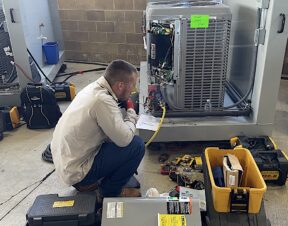 Dain Hansen is vice president of Government Relations, The IAPMO Group. He lends his frequent perspective of Capitol Hill, and the plumbing industry.
Dain Hansen is vice president of Government Relations, The IAPMO Group. He lends his frequent perspective of Capitol Hill, and the plumbing industry.
Here is an edited version of his update from September 11, 2015:
Fracking Company Using Toilet Water To Cut Costs
Pioneer Natural Resources seems to be going a step further in the name of price cuts and efficiency. The firm is finding an efficient, if somewhat unconventional, source of water for use in its fracking operations — the neighbors’ toilets. Pioneer recently signed an 11-year, $117 million deal with the city of Odessa, TX giving Pioneer the rights to treated sewage from toilets, sinks and showers across the city. The firm will start getting waste water deliveries by the end of the year. The Odessa-Pioneer deal makes a lot of sense given Pioneer needs the water and places a high value on it in light of its economic usefulness. In contrast, Odessa city officials indicated that the treated water was mostly used for irrigation, so diverting it to Pioneer makes more sense economically. The deal could be the start of a trend. EOG is looking at its own wastewater deals, while Anadarko uses waste water from the city of Aurora, CO. Since Pioneer would have had to get that water somewhere else if it didn’t get it from Odessa, the deal is the equivalent of annually freeing up about 16,000 gallons of water per person in the city of 110,000.
Solar Industry Poised For Another Record Year As Tax Credits Look To Sunset
The U.S. solar industry is on course for a new growth record in 2015, according to a new report that finds that solar photovoltaic installations now exceed 20 gigawatts in capacity and could surpass an unprecedented 7 gigawatts this year alone across all segments. The new report, from GTM Research and SEIA, covers the second quarter of 2015, which set a new record for residential rooftop solar installations in particular, a category that saw 70% year-over-year growth. 473 megawatts of residential solar capacity were installed, or nearly half a gigawatt. “It’s setting records every quarter,” says Shayle Kann, senior vice president of GTM Research and lead author of the report, of the residential segment. The report comes just weeks after President Obama traveled to Las Vegas — a particularly fast-paced solar market — to sing the industry’s praises and cast solar, and particularly “distributed” solar on rooftops, as an icon of progress and technological innovation. There are storms ahead. If the solar investment tax credit is allowed to decline, the industry will face considerable uncertainty from 2017 to 2019 that could hampered growth. Many hope that the situation will then change again after 2020, as a key incentive program that’s part of the federal Clean Power Plan goes into effect, which will strongly favor solar and wind.
California Apartment Buildings Need Better Water Management To Reduce Usage During Drought
According To New Study. A new two-year study of water efficiency in multifamily buildings found that, on average, California apartment buildings used 6 percent less water in the first half of 2015 compared to the first half of 2013. A very dry May and June saw upwards of 10 percent savings. These savings are substantially less than the 27% reduction reported for California as a whole in May, and also fall short of Gov. Jerry Brown’s required 25% reduction. Savings levels varied across the population of buildings in the study. Apartment buildings that implemented retrofits achieved markedly higher savings than other buildings in the study, reducing water use by 25 percent in the first half of 2015 relative to 2013. Retrofits ranged from comprehensive water fixture overhauls (sinks, showers, toilets) to landscaping upgrades, like drip irrigation replacements. The study shows California apartment buildings “are brimming with untapped efficiency potential,” according to Barun Singh, founder and CTO of WegoWise. “Apartment building owners that do implement targeted upgrades can meet statewide goals while lowering utility expenses and boosting cash flow: a pretty compelling incentive.”
The WegoWise study drew upon a database of over 700 multifamily buildings across the state from January 2013 through June 2015. Data includes 21,000 units, almost 32,000 bedrooms and 2.4 billion gallons of water usage over the two-year period.
States Continue To Fight Obama Water Rule
Thirteen states and the Obama administration are battling in court over whether the new federal water pollution rule should apply in every state. A North Dakota federal judge blocked the rule’s implementation last week, hours before it was due to take effect, but the Environmental Protection Agency (EPA) said it would still enforce the new regulation in every state that was not involved with that lawsuit. But those states, led by North Dakota, said late Tuesday in a court filing that the regulation should be blocked everywhere in the name of consistency and because they will likely win the case. The future of how the controversial rule will be enforced is complicated by the fact that not every state in the nation is challenging the regulation. And the other states that are suing are waiting court decisions or have had their motions rejected. The water rule has been highly contentious, with many business groups and Republicans arguing that it greatly expands the federal government’s jurisdiction. The Obama administration argues that the Clean Water Act clearly requires it to protect the small streams, wetlands and other bodies of water that the new regulations cover.




Join the conversation: